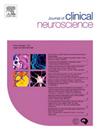Mask-based vs. frame-based stereotactic radiosurgery: A systematic review
IF 1.9
4区 医学
Q3 CLINICAL NEUROLOGY
引用次数: 0
Abstract
Stereotactic radiosurgery (SRS) has been demonstrated over more than 30 years to be a safe and effective treatment for a variety of central nervous system disorders, including brain metastases. Traditionally, SRS delivery has required placement of a Leksell frame prior for treatment planning. Although highly accurate, frame placement introduces issues in workflow and patient comfort. In response to these constraints, a new innovative SRS delivery system—Gamma Knife Icon—was developed to support a frameless mask-based technique. The relative benefits of frame- or mask-based SRS remain incompletely understood. Mask- or frame-based SRS were the compared treatment modalities. Tumor control was the primary outcome; adverse radiation effects (AREs; e.g., radiation necrosis) and dosimetric parameters were the secondary outcomes. PRISMA-compliant systematic review of three databases (PubMed, Google Scholar, OVID Medline) from inception through 12/31/2022. Predetermined inclusion criteria were quantitative data analysis, direct comparison between mask- and frame-based SRS techniques, and outcomes including either tumor control or AREs. To limit confounding by fractionation scheme, inclusion was also limited to cohorts with separate explicit data on single-fraction treatment plans. Abstract screening yielded 24 candidate manuscripts for full-text review; 5 publications met all criteria and were included. All 5 studies failed to detect a difference in tumor control or AREs between mask- and frame-based SRS techniques. Mask-based SRS may offer a more convenient treatment for brain metastases, with comparable efficacy to frame-based SRS. Given the congruent findings between preceding observational data, one RCT, and the present meta-data, mask-based SRS may be considered the front-line technique for brain metastases.
求助全文
约1分钟内获得全文
求助全文
来源期刊

Journal of Clinical Neuroscience
医学-临床神经学
CiteScore
4.50
自引率
0.00%
发文量
402
审稿时长
40 days
期刊介绍:
This International journal, Journal of Clinical Neuroscience, publishes articles on clinical neurosurgery and neurology and the related neurosciences such as neuro-pathology, neuro-radiology, neuro-ophthalmology and neuro-physiology.
The journal has a broad International perspective, and emphasises the advances occurring in Asia, the Pacific Rim region, Europe and North America. The Journal acts as a focus for publication of major clinical and laboratory research, as well as publishing solicited manuscripts on specific subjects from experts, case reports and other information of interest to clinicians working in the clinical neurosciences.
 求助内容:
求助内容: 应助结果提醒方式:
应助结果提醒方式:


